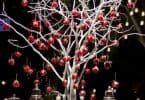 If you’re new to wine, want to pick the perfect bottle to give as a gift or serve at dinner, or simply want a few tips on how to select a good wine, please read on.
If you’re new to wine, want to pick the perfect bottle to give as a gift or serve at dinner, or simply want a few tips on how to select a good wine, please read on.
The amount of information out there about wine can easily overwhelm one. This article is meant to serve as a good basic starting point. Enjoy!
Flavor Factors
The types of grapes used in a wine are the primary contributing factor to its overall taste. The distillation of flavors has also been affected by the soil type, the climate, sunlight exposure, fermentation& aging methods.
Types of Wines
There are two basic types of wine – red or white. Every wine comes from grapes, but a variety of flavors can be achieved by combining the basic wine with fruits, spices, or herbs.
Basically, white wines can be made from any color of grape, but only the clear juice of those grapes is used. Red wines pretty much use the whole black or red grape – seeds, skins, stems and juice.
Whites are typically sweeter, and reds are considered heavier. When wine is created & carbon dioxide is produced, then it becomes a “sparkling wine.”
Tannins
Tannin is primarily to do with red wine; tannin is a bi-product of skins, pips & stalks of the grapes. In young wines, tannins tend to produce a bitter taste; aged ones have subtler tannin influences.
When someone mentions the “length” of a wine, they’re referring to how long the taste & aroma sensations remain after swallowing the wine.
Acidity
Varying types and amounts of acid are necessary contributors to all wine’s taste & longevity. Higher acidity creates tartness, or sourness. However, if acidity is too low, the wine will taste flat and likely go bad sooner.
When acidity is balanced perfectly, all of the combined flavors are highlighted, such as the herbs, spice and fruity essences. When you pronounce a wine to be “sharp,” “tangy,” perhaps “zingy,” “bright,” or “crisp,” that assessment is primarily based on its acidity.
Alcohol Content
If a wine is considered “full-bodied” that generally means it has a high alcohol volume content – usually 12.5% or more. Medium-bodied wines range between 10.5% and 12.5%, whereas light bodied wines alcohol content is between 7.5% and 10.5%.
Vintage
Translation: What year the wine was made. Due to inconsistent weather factors, certain years produce superior wines. Rainfall quantity close to harvest time determines how much sugar is in the grapes, and therefore, of course, affects the taste of the wine. Just remember, older wine does not necessarily make it better. However, if you’re looking for a bottle of wine that’s pretty sure to impress, anything from 1990 (considered an excellent vintage) should work in your favor.
Read the Label
The label tells you the variety, region, type, vintage, & something about the flavor, as a rule. Read any owner’s (vintner’s) notes, because those may contain great suggestions.
Wine grades are always on the label. Generally,the higher the rating, the better the wine. When seeking a quality wine, 80 point ratings or above are suggested.
Purchasing & Other Tips
Only buy wine from sellers who properly store & care for it (wineries always do). Direct exposure to sunlight, dramatic temperature variation or extreme cold or heat are not good for wines.
Be sure the wine bottle is full all the way up to the neck. The cork should never be pushing out of the bottle, and there shouldn’t be any signs of leakage.
Kevin Preble of Phoenix, AZ often buys from wine brokers & will sometimes buy wine online. He’s a food & entertainment critic, and loves a great glass of wine.
Latest posts by Canadian Home Trends (see all)
- Dining Room Design Tips - July 13, 2025
- Practical Luxury in Forest Grove - July 13, 2025
- The Hidden Value of Great Design - July 13, 2025






